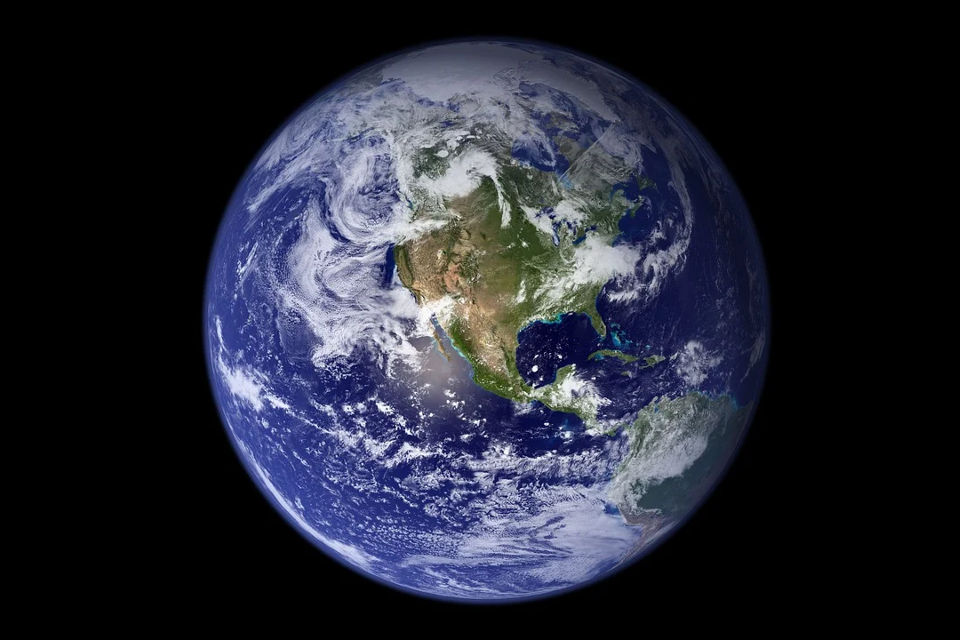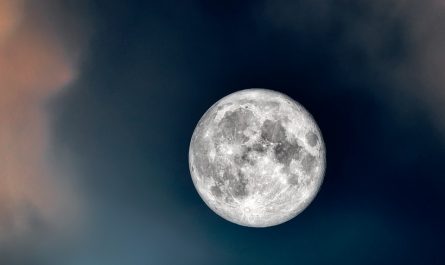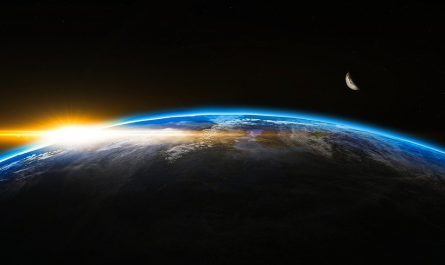While Earth is the only planet we know, there are so many facts about Earth that many of us don’t know at all. We decided to uncover some of the coolest and most interesting facts about Earth that we could find. Our list of 25 Earth facts cover a wide range of things you may not know about our planet. These facts about Earth include things like the actual shape and size of our planet, the many billions of years Earth has been around, and the true number of natural disasters Earth experiences every year. There are plenty of Earth facts for kids to enjoy! Which of these fun facts about Earth were you the most shocked to find out?
1. Earth is not perfectly round.
Earth is not a perfect sphere. As Earth spins on its axis, gravity pulls toward the center while a centrifugal force that is perpendicular to the axis pushes out, causing Earth to slightly bulge in the middle at the equator. The diameter of Earth between the two poles is 7,900 miles, while the diameter of Earth at the equator is 7,926 miles. This extra 26-mile width at the equator is far too small to see in pictures of Earth, giving it the appearance of being perfectly round.
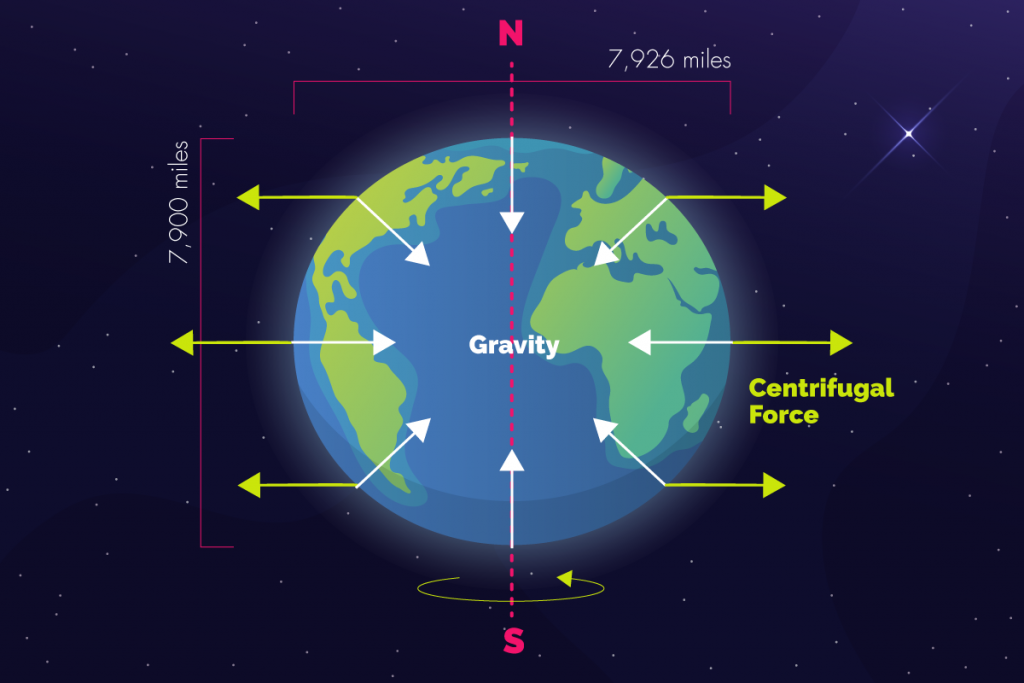
2. Earth is constantly spinning at a fast speed.
While it may feeling like you are standing still, Earth is constantly spinning underneath your feet. It spins at a constant rate, yet the speed is different depending on latitude. Earth spins the fastest at the equator, at speeds of just more than 1,000 mph, but this speed decreases as you move toward either of the poles. Halfway between the equator and the poles, Earth is spinning at 733 mph. At the North or South poles, you would not be moving at all, since it is an axis point. Launching rockets into space is usually done near the equator, as the faster spin gives the rocket a speed boost to help it reach space.
3. Earth is a terrestrial planet.
A terrestrial planet is one that is primarily made of rocks or metals and has a compact, rocky surface. Other terrestrial planets in our solar system include Mercury, Venus, and Mars. Earth is the only one of these to have a substantial planetary magnetic field, though.
4. Earth’s name means “the ground.”
While all of the other planets in our solar system were named after Greek and Roman gods and goddesses, Earth was given an English name that simply means “the ground.” It derives from the Old English word “eorthe.” The word “Earth” is at least 1,000 years old.
5. Earth used to have one large continent instead of seven.
Earth’s land masses came together 800 million years ago to create a large supercontinent named Rodinia. This supercontinent eventually broke apart into many pieces, with some of them colliding 250-500 million years ago and creating mountain ranges that are still standing today, like the Appalachian Mountains and the Ural Mountains. The continents came together to create another super-continent around 250 million years ago, called Pangaea. Fifty million years later, Pangaea broke apart into two continents called Gondwana and Laurasia, both of which broke apart further to create the seven continents we have today.
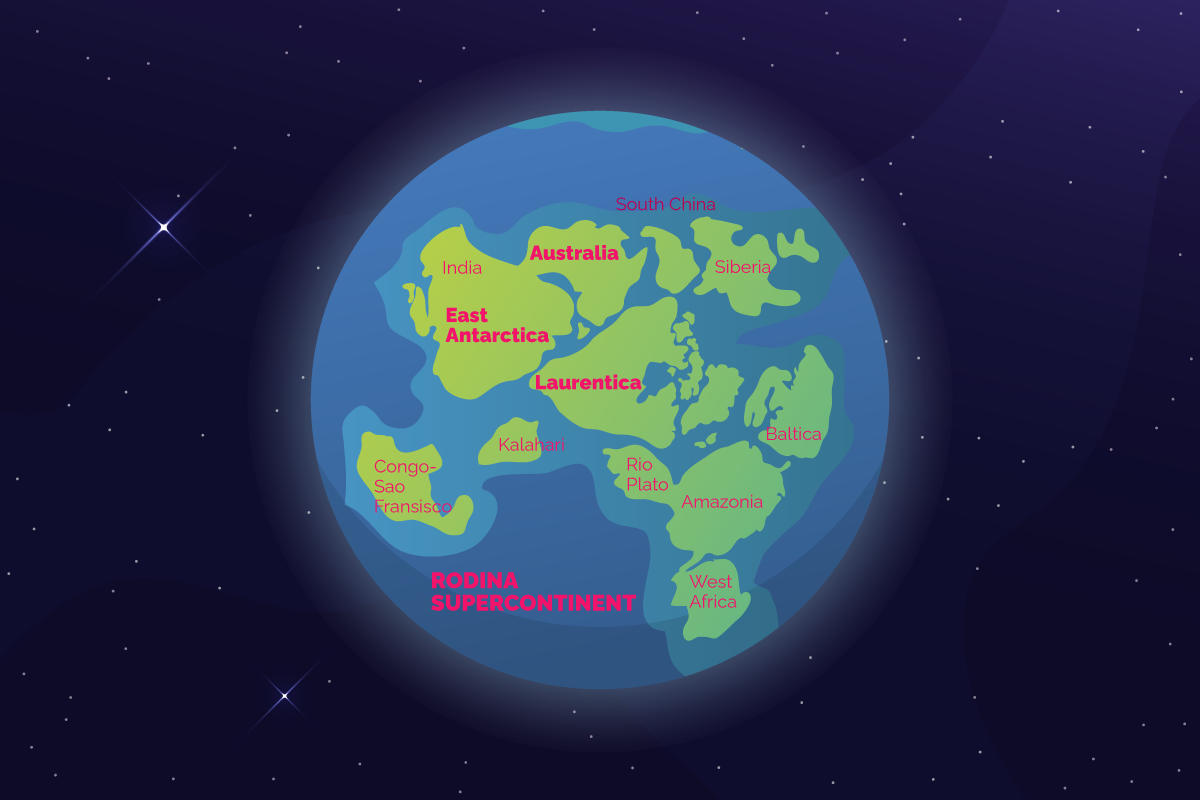
6. Earth is 4.54 billion years old.
Geologists have determined that Earth is 4.54 billion years old. They determined Earth’s age by testing material from meteorites and rocks from the moon, which are slightly younger than Earth. They also identified the oldest mineral and rock found on Earth (4.408 and 4.28 billion years old) to help estimate Earth’s true age.
7. Water makes up 71% of Earth’s surface.
About 71% of Earth’s surface is covered in water, with the oceans making up 96.5% of all of the water on Earth. Aside from the oceans, Earth’s water can also be found in lakes, rivers, ice caps, glaciers, soil moisture, water vapor in the air, and even in humans and animals.
8. Earth orbits the sun at a speed of 67,000 mph.
Earth orbits the sun at a speed of 67,000 miles (or 107,826 km) per hour. At this high speed, Earth is able to fully orbit the sun in 365.25 days.
9. Earth’s circumference is 24,898 miles.
The circumference of Earth, which is the distance around the largest part of the planet, is roughly 24,898 miles (or 40,070 kilometers). This is the distance that Earth spins in its 24-hour rotation.
10. Earth is 93 million miles from the sun.
Earth is the third-closest planet to the sun, with a distance of 93 million miles (or 150 million km) between the two. The two closest planets, Mercury and Venus, are 29 million miles and 67 million miles from the sun respectively. The fourth-closest plant, Mars, is 136 million miles from the sun.
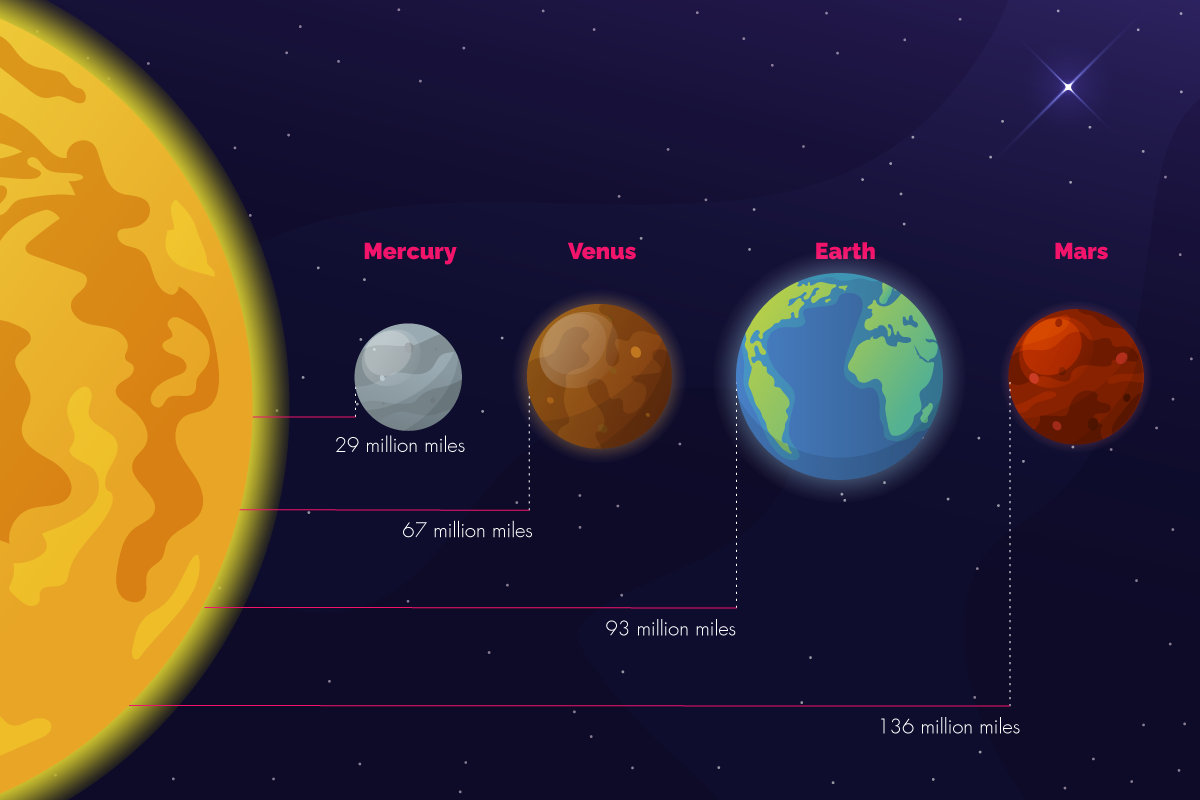
11. Earth experiences cyclic cold periods and warm periods.
Earth has gone through cold periods, also known as ice ages, and warm periods, known as interglacials, every 100,000 years for the past million years. We are currently in a warm period, with the last cold period having ended 20,000 years ago. During these cycles, Earth’s temperature can increase or decrease anywhere from 5° to 15° F (3°- 8° C).
12. Earth’s hottest recorded surface temperature was 177.4°F (80.8°C).
The two hottest spots on Earth in terms of surface temperature are the Lut Desert in Iran and the Sonoran Desert on the border of the United States and Mexico. These two hot spots were recently discovered thanks to a new analysis of high-resolution satellite data, and they can reach a scorching high temperature of 177.4°F (80.8°C). Death Valley, California, holds the record for the hottest air temperature on Earth: It reached a high of 134.1°F (56.7°C) on a July day in 1913.
13. Earth’s coldest spot is the Eastern Antarctic Plateau.
The coldest spot on Earth is the Eastern Antarctic Plateau, which was found to have an air temperature of -137°F (-94°C), based on data collected by a satellite between 2004 and 2016. And the dry air that is found in this area of Earth could cause these low temperatures to get even colder!
We’re halfway through the 25 most interesting facts about Earth: Which ones were you most surprised to learn? The massive size of Earth and the incredibly fast speeds at which it orbits the sun are some of our favorite Earth facts so far! Continue reading on for more facts you may not know about Earth. Interesting facts like how Earth was formed and the high number of earthquakes the planet experiences annually are waiting for you!
14. Earth has a magnetic field that protects it from the sun.
Earth has a magnetic field, called the geomagnetic field, that extends from its interior out into space. Earth’s magnetic field deflects most of the solar wind, which is a stream of charged particles that emanate from the sun. If these charged particles weren’t deflected by the geomagnetic field, they would strip away the protective ozone layer around Earth. The North and South poles are at opposing ends of the magnetic field, as if a large magnetic bar ran through the center of Earth.
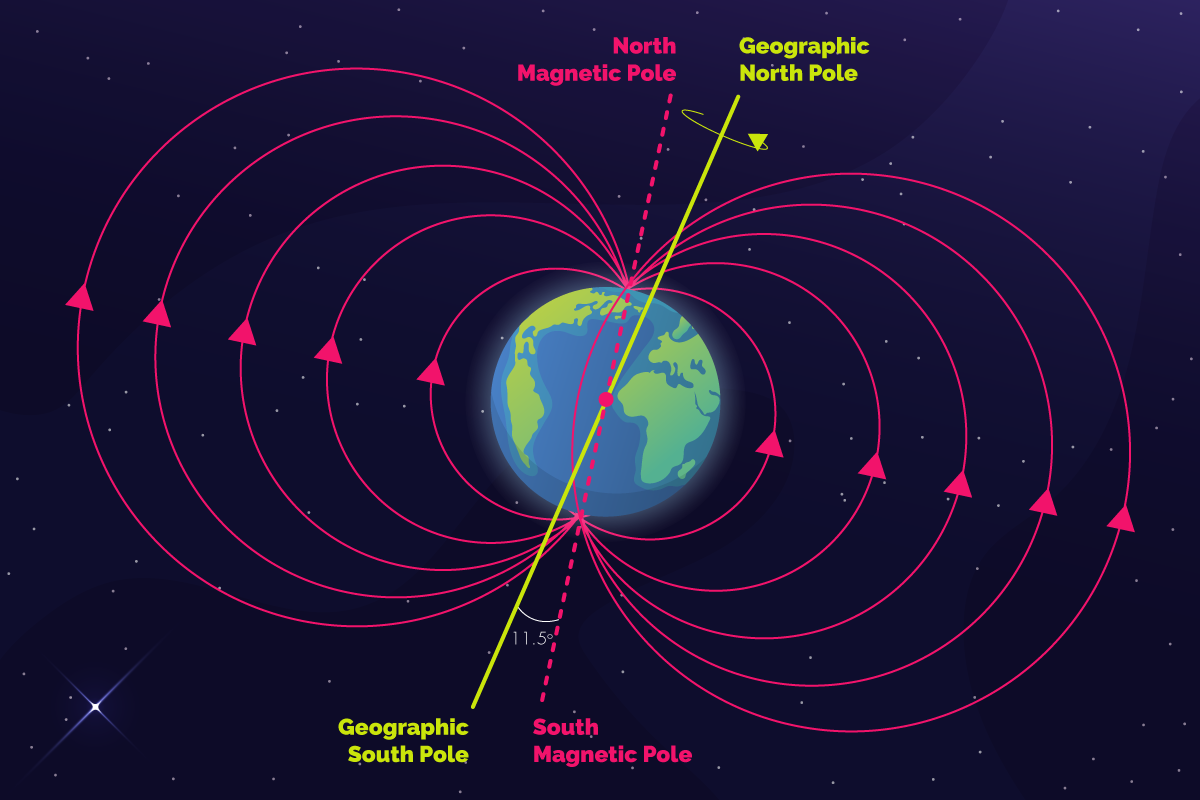
15. Earth’s ozone layer protects it from harmful rays from the sun.
Earth’s ozone layer sits 10-25 miles (15-40 km) above the surface, in what is known as the stratosphere. The ozone layer shields Earth from harmful ultraviolet radiation from the sun. Without the ozone layer, these harmful ultraviolet rays would cause great harm to the planet and the people on it.
16. Earth has 1,350 potentially active volcanoes.
Earth has 1,350 potentially active volcanoes spread across it, with 161 located in the United States and its territories. Many of the potentially active volcanoes are located along the Pacific Rim in an area known as the “Ring of Fire.” On average, 50 to 60 volcanoes erupt somewhere on Earth each year, with some erupting just days apart.
17. Earth has an average of 20,000 earthquakes each year.
Earth has around 20,000 earthquakes every year, although many of them are low-magnitude quakes. An average of 16 major earthquakes are expected to occur each year, with 15 of them falling in the magnitude-7 range and one that will fall in the magnitude-8.0 range or greater. The year with the most major earthquakes was 2010, when 23 earthquakes with a magnitude of 7.0 or greater occurred around the world.
18. Earth is made up of four different layers.
Earth is made up of four distinct layers: the crust, the mantle, the outer core, and the inner core. The crust is the outer layer of Earth and the layer we live on. It is the thinnest layer and only makes up 1% of Earth. The mantle makes up 84% of Earth’s volume and consists of solid and molten rock, also known as magma. The mantle’s temperature ranges from 1,832° F (1,000° C) to 6,692° F (3,700° C) at its deepest point. The outer core lies beneath the mantle and reaches a temperature between 8,132°F and 9,932° F (4,500°C to 5,500°C), so hot that it consists of liquid iron and nickel. The outer core is credited with creating the magnetic field that protects Earth. The inner core is at the center of Earth and is a solid, hot ball of nickel and iron that has been highly pressurized. Its temperature is similar to that of the sun, reaching a high of 9,800°F (5,430°C). The inner core makes up 20% of Earth’s mass.
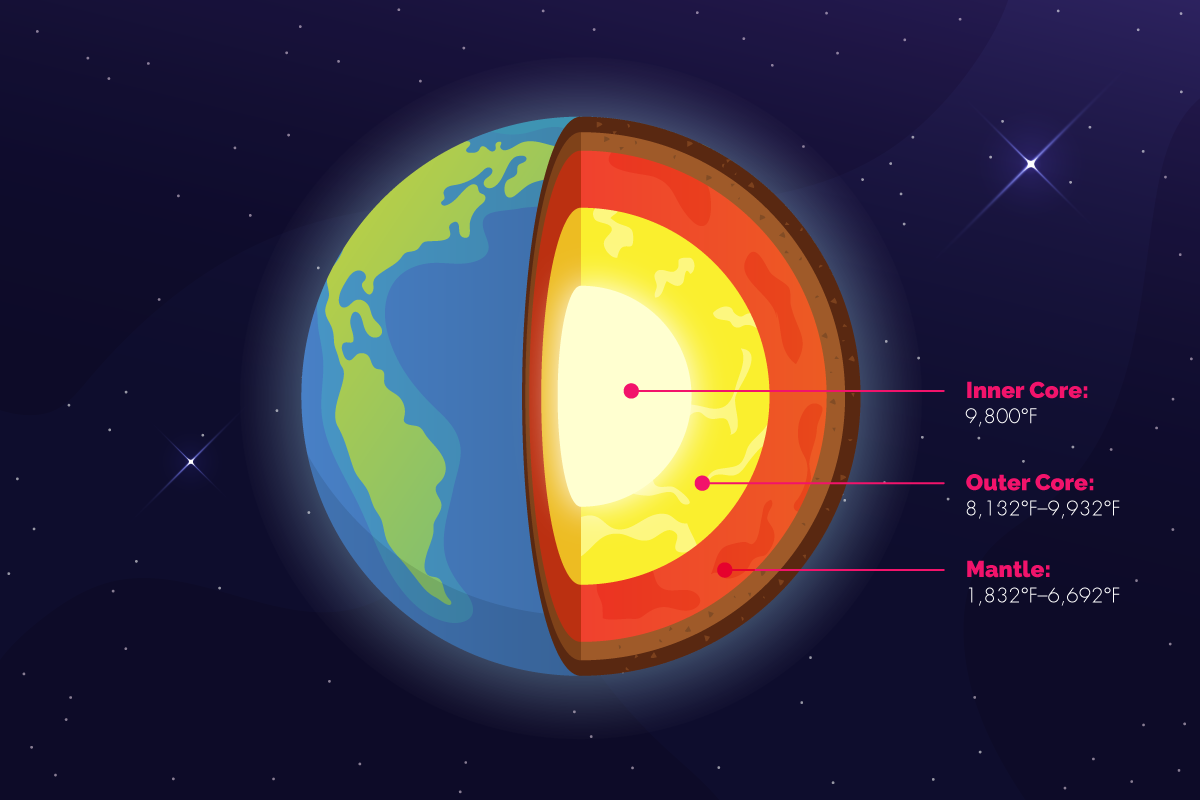
19. Earth’s day is continually getting longer.
The average length of a day on Earth is 24 hours, but that wasn’t always the case. When Earth first formed 4.54 billion years ago, a full day was 6 hours long. This increased to 21.9 hours 620 million years ago and then to the 24-hour length that we are familiar with today. The average length of a day on Earth is still increasing, but only by 1.7 milliseconds every century. The cause of Earth’s average day increasing is the moon slowing down Earth’s rotation through the tides. Earth’s spin causes the tides to pull slightly ahead of the moon-Earth axis, resulting in a twisting force that slightly slows down the rotation of Earth.
20. Earth was formed from a mixture of dust and gas.
Earth formed from dust particles and gas that were orbiting the sun, with the force of drag bringing them together to form clumps of rock that grew to the size of planets. These rock clumps would collide and increase in size, leading to the creation of all of the planets in our solar system. Earth’s last big collision was so large that it increased the planet’s size and created enough energy to vaporize some of the rock and metal. This vaporized rock and metal that formed around Earth eventually clumped together to create the moon.
21. Earth’s gravity isn’t uniform.
The gravity on Earth is assumed to be the same everywhere, but it varies around the globe due to the planet not having uniform density or a perfectly spherical shape. Gravity is weaker at higher altitudes, as they are farther from Earth’s center, and gravity is also weaker at the equator due to centrifugal forces caused by Earth’s rotation.
22. Earth once had two moons.
Earth didn’t always have one moon; it’s believed that a much smaller second moon once orbited Earth before crashing into the larger moon. Scientists believe this could explain why the two sides of our current moon look so different. The second moon was estimated to have been about 750 miles (1,200 km) wide and may have formed during the same collision that created our current moon.
23. Earth is tilted on its axis.
Earth is tilted 23.5 degrees on its axis, a phenomenon known as the axial tilt. Due to this tilt, the sun shines on different parts of Earth throughout the year, causing more hours of daylight on the part of Earth that is tilted closer to the sun. The axial tilt is what causes different seasons on Earth; summer occurs on the part that is tilted closer to the sun, while winter occurs where Earth is tilted away from the sun. The axial tilt is from when Earth was formed by crashing into another planet-sized clump of rock, which knocked the planet over at an angle.
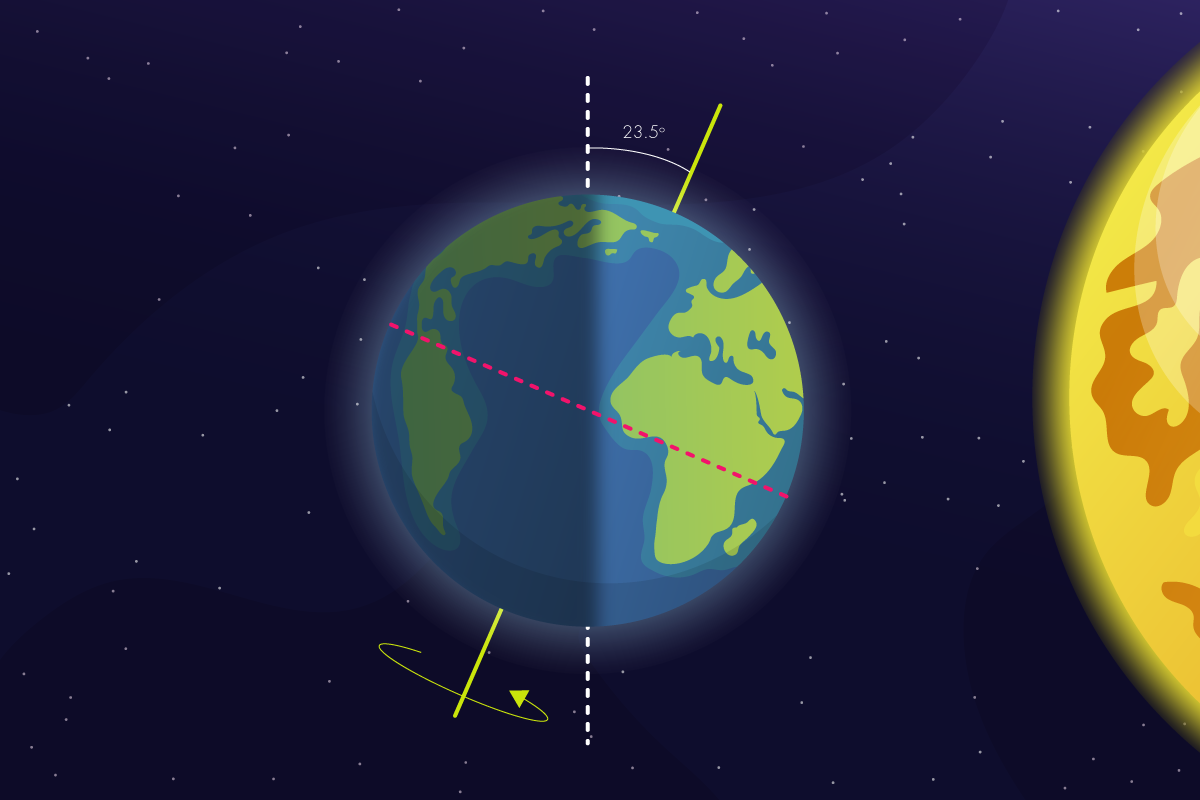
24. Earth’s deepest point is 7 miles below sea level.
The deepest point on Earth is 36,200 feet (11,000 m) below sea level and is known as the Mariana Trench. It was discovered in 1875, when it was believed to be 26,850 feet deep, but an expedition in the early 1900s discovered its true depth. The pressure at this depth is nearly 1,000 times the pressure at sea level, making the Mariana Trench too dangerous for most living things.
25. Earth’s highest point is 33,500 feet from its center.
The highest point on Earth from its center is the peak of Mount Chimborazo in Ecuador, which is 33,500 feet from Earth’s center. While Mount Everest’s height of 29,029 feet is the highest point above sea level, Earth’s bulge at the equator gives Mount Chimborazo an additional 4,500 feet of height above the center of the planet.
We hope you enjoyed learning these many facts about Earth. Fun facts like these only come around once every 5 billion years!
Check out these other facts about space including the following facts about planets:

